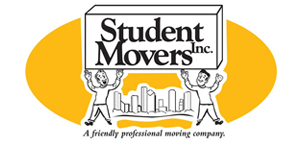RECOMMENDED MOVING PACKING MATERIALS and GENERAL PACKING GUIDELINES PACKING TIPS RECOMMENDED PACKING MATERIALS Cartons. Packing cartons are specifically designed in various sizes for various purposes and the contents they contain. The cartons that you may get from your local grocery or liquor store may be damaged, cut or have the corners crushed. Look for cartons in good condition with the covers intact. You may also ask your mover regarding the purchase of used or new cartons. They will have cartons specifically designed for items such as mirrors, beds, china, clothing etc. Packing paper. You may save up newspaper for use in packing, but note the ink may rub off onto the items packed requiring cleaning before being put away. You can purchase packing paper from your mover, which will not soil your belongings. Packing tape. Masking tape is not recommended. The best tape is plastic and approximately 1.5 to 2 inches wide. Bubble wrap and tissue. Used to wrap very delicate, fragile items such as figurines. Scissors or a cutting blade. Markers. Used to label the contents of cartons. GENERAL PACKING GUIDELINES - Begin packing well in advance. Start with items least used in your household.
- Pack one room at a time, labeling each carton with the general contents and the destination room in the new home.
- Cartons containing fragile or high value items should be clearly marked for your mover.
- Follow the guideline below as to what cartons to use for your belongings, and remember, the heavier the contents, the smaller the carton.
- Ensure the bottoms of the cartons are well taped to hold the contents.
- When packing individual cartons, place the heavier items on the bottom, graduating to the lightest items on top.
WHAT TO TAKE WITH YOU It is best to take the following paperwork and valuables with you, rather than have them packed and transported by your mover. - Cash
- Coin/stamp collections
- Deeds/wills
- Mortgage or rental paperwork
- Stock/bond certificates
- Jewelry
- Family photos or videos
- Contents of safety deposit box
DO NOT PACK The following items are classified as dangerous or hazardous goods and cannot be transported by your mover. - Aerosol cans
- Ammunition
- Firearms
- Bleach
- Cleaning fluids
- Paints and paint thinner
- Matches
- Lighter fluid
- Batteries
- BBQ tanks
- Pressurized tanks
- Flammable or corrosive chemicals
- Loaded firearms
- Firecrackers
- Flares
- Explosives
- Perishable goods
- Food in glass jars
- Gasoline
- Kerosene
- Fertilizers containing Ammonium Nitrate
- Live plants
CARTON TYPES Crystal/Dresden Carton
These small cartons are used for packing small, very fragile items which are then put into other cartons. 2 Cubic Foot Carton
The 2 cube is a small carton used for heavy items such as books, CDs, canned food, tools. The heavier the contents, the smaller the carton. 4 Cubic Foot Carton
The 4 cube is often used for mid-weight, midsize items such as pots, pans, clothing, shoes, nonperishable food items. 5 Cubic Foot Carton
The 5 cube is generally used for items such as bedding, linen, towels, lampshades, toys, etc. China Barrel
This is a thick carton used to pack dishes, china and glassware, lamps – items of a fragile nature. Mirror/Picture Carton
These cartons come in varying sizes and can telescope to fit varying sizes of pictures, mirrors, etc. Wardrobe Carton
These tall cartons have a bar that attaches across the top to allow clothing on hangers to be placed on the bar and packed. They can also be used for drapes or without the bar for bulky items that are not too heavy. Mattress Carton or Mattress bag
These cartons or bags come in every size for every mattress and box spring type. GUIDELINES FOR PACKING AND PREPARING SPECIFIC ITEMS MOVING LARGE APPLIANCES
Most major gas or electric appliances such as refrigerators, washers and dryers require special servicing to ensure safe transportation. All parts should be professionally secured prior to transport. Gas appliances in particular need professional disconnection and reconnection. MOVING PIANOS
It is best to ask your mover if the moving crew is able to handle the disassembly/reassembly of your piano or if a specialist should be hired to do this. Crating of this item is also recommended. MOVING CLOCKS
Large clocks, such as grandfather clocks, often require special disassembly and possibly crating, which your mover can provide. With any clock, it is important to remove the pendulum. MOVING WATERBEDS
Your mover may provide special servicing for your waterbed including draining and filling. If you choose to drain and fill the bed yourself, it is best to follow your manufacturer’s instructions. You will want to pack your waterbed mattress/bladder very carefully. Pack in a carton with only soft items such as comforters and linen. MOVING BUREAUS & DRESSERS
Clothing may remain in drawers for transport. Ensure the drawers are not overloaded as this may cause damage to the drawers themselves. Also, remove any fragile or small loose items from the drawers and pack separately. During the loading process, your driver will pad the entire piece to ensure the drawers remain in place. MOVING COMPUTERS
Make backups of all files on the computer. Remove disks from their drives and replace with the original cardboard disks. It is best to park your system, that is, remove the recording heads from the data area. If you are unfamiliar as to how to do so, and it isn’t mentioned in your computer manual, contact the manufacturer for advice. Once this is done, all cables should be removed and individually wrapped. Any non-detachable cords should also be wrapped. If possible, it is best to pack these items in their original cartons with the original packing material provided. If you don’t have the original cartons, make sure you use plenty of padding to protect each item in the carton. Printers should also be packed in their original cartons. Make sure you remove the ink cartridges and pack them separately. MOVING SMALL KITCHEN APPLIANCES
It is most convenient to pack small kitchen appliances such as your toaster, can opener, and blender together in one or several cartons. Each item should be wrapped individually in several pieces of packing paper and placed in a pre-filled carton of wadded packing paper. Spaces in the cartons may be filled with smaller items such as pots and pans. MOVING DRY OR CANNED FOOD
Dry foods that have been opened should be securely sealed with tape to avoid spillage. Lids to any jars, such as spices should be securely closed. Dry food items in breakable containers should be wrapped with several sheets of packing paper. Sealed cans may be placed in the carton without wrapping. MOVING GLASSES, CUPS & STEMWARE
Pack each glass with 2 pieces of packing paper. Take the 4 corners of the paper and fold into the glass. This creates a protective lining for the next glass to be inserted. Wrap the third cup as you did the first one and place into the stack. A fourth glass may then be added. Finally, completely wrap the stack with several pieces of packing paper, taping the paper securely to the bundle. Place the bundles upright in the carton, pre-filled with wadded packing paper in the bottom, and ensure they are separated with plenty of packing paper. Stemware must be packed individually with plenty of paper and packed stem up in the carton. Place wadded packing paper onto the top of the contents and tape the carton securely. Mark “Fragile – Glassware”. MOVING PLATES AND DISHWARE
Place wadded packing paper along the bottom, sides and corners of the carton. Place your first plate in the center of a stack of packing paper; wrap two sheets of paper over the plate. Place the second plate on top and use two more pieces of paper to enfold the plate. Continue until you have a bundle of 4 plates. Place the bundle on edge rather than flat in the carton. Mark “Fragile – Dishware”. MOVING LAMPS
Line the carton with a generous amount of packing paper or bedding and linen. Remove the shades, bulbs, harps and finials (metal attachments). The harps and finials may be wrapped in packing paper and taped to the inside of the carton. Roll the lamp cord and secure with a twist tie or wrap around the base of the lamp. Place the lamp on several pieces of paper and wrap around the lamp, tucking or taping the paper into the base of the lamp. Tape any loose ends of the paper to the lamp and secure the top with tape. If you are packing more than one lamp in a carton, separate with bedding, pillows, linen, etc. Mark “Fragile – Lamps”. MOVING LAMP SHADES
Lamp shades can be nested together provided there is a sufficient amount of clean packing paper placed in between each shade. No other items should be packed with lampshades. Some shades such as those made of silk should be packed separately. Pad the carton with plenty of wadded packing paper. MOVING PICTURES/PAINTINGS
Small pictures or paintings should be individually wrapped in bubble wrap and placed upright – not flat -in the carton. These can be placed in cartons with other items such as towels or bedding. Larger framed items, including mirrors, can be specially packed by your mover. If you choose to pack these items yourself, the following guidelines may be followed. Place an “x” of masking tape across the glass to help protect the picture against damage should the glass be broken. Place your picture face down on several sheets of packing paper. Wrap the picture completely with the paper and seal the wrapping with tape. Line the bottom of your picture carton with packing paper and slide the picture into the carton. If there is sufficient space, more than one picture can be placed in a carton. Ensure the pictures are buffered with plenty of packing paper or bubble wrap. Once all pictures are placed into the carton, place wadded packing paper on top of the pictures and seal the carton. Mark “Fragile – Paintings/Pictures”. MOVING GARAGE ITEMS & TOOLS
All gasoline and oil must be drained from any tools or machinery that is to be transported, such as lawn mowers, chain saws and snow/leaf blowers. Batteries must also be disconnected. Arrange for disposal of propane tanks as your mover will not transport them. Long handled garden tools may be bundled and taped together for transport. This is also applicable to curtain rods “CLICK HERE” to contact our State licensed professional moving company in Houston. When you need to move NOW! Call for same day service.
With 24 hour / 7 day a week quality service. When you are ready to move, We will be there. 13644 Tomball Parkway
Houston, TX 77086
713-728-4900 Email us at info@houstonstudentmovers.com DOT# 00556730B Home Page | Quick Quote | Services | Our Insurance | About Us | Storage | Boxes & Supplies | Moving Tips | Packing Tips | Site Map | 






